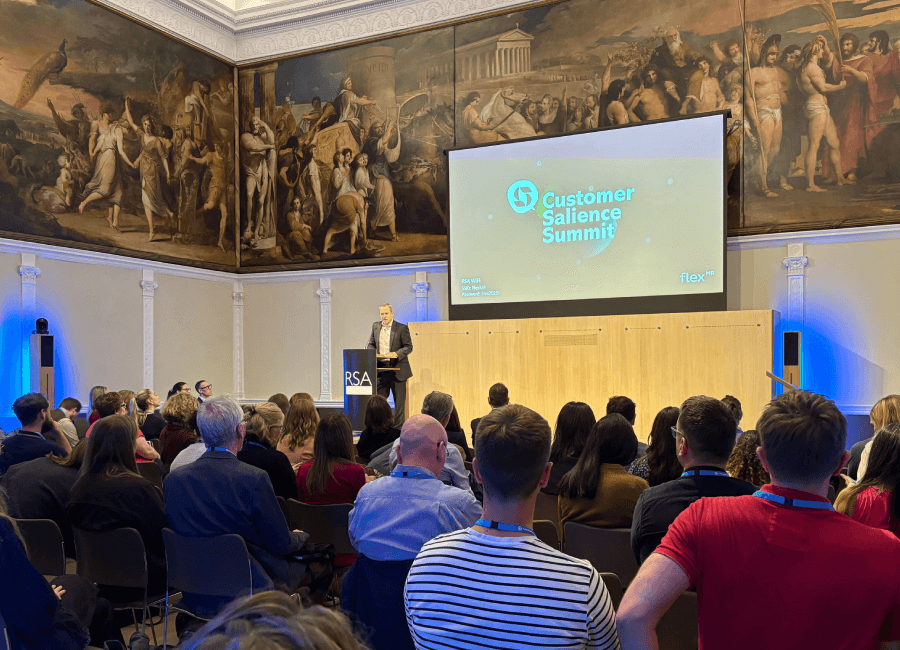Making research processes more efficient is beneficial for all insight teams. From efficiency data collection and analysis, to better research design and communication with stakeholders, efficiency is a goal that many insight professionals strive for, but there are obstacles that stand in the way.
Stakeholders hold the key to success in the insights industry, powering our path towards success through financial injections and pointing the direction in which to drive. Without stakeholders and their never-ending supply of questions, the industry wouldn’t be what it is today. While research has advanced and innovated within the insights industry, stakeholders dictate exactly what we use our carefully honed research and analysis techniques on and for how long. So how can we become more efficient in our research processes to better cater towards stakeholder needs?
Market Research Efficiency
Breaking the research experience into four stages helps insight teams take a look at where in their carefully crafted processes they could become more efficient.

The Connection Between Efficiency and Results
Efficiency comes from a thorough evaluation of existing processes, making sure insight teams know exactly what they do and how they do it to see where the issues lie and what other paths could be taken to fix it. And the best way to start is at the very beginning.
Recruitment is the stage where stakeholders and insight teams find the best participants to take the surveys, to contribute to focus group discussions, to make the sentiment-led mood boards, and whatever else researchers throw at them. We have been talking about sample demographics and sizes, suppliers and recruitment methods since the very first survey was created, and still we are only a bit further along than we were then.
When looking to streamlining the recruitment process a knowledge of the process itself is needed, something even insight teams might not have if they outsource the task to sample providers. This foundation knowledge is necessary before we can truly understand what information we need to find the right participants. This knowledge can only be gathered by speaking to experts in the field, speaking to research and sample providers to find out what knowledge they have that could help you maximise efficiency within the recruitment process so insight teams can start the research experience off strong.
When it comes to conducting the research, having a strategy already in place will help streamline the data collection process exponentially. In this strategy, insight teams will have sat down with stakeholders to discuss exactly what it is they’re looking for, what objectives they’re working towards, and any other information they feel is pertinent to building the best research experience. While insight teams have the essential research knowledge needed to make this work, stakeholders are the key to designing a truly effective research strategy through their contextual knowledge.
Building the foundations of the research experience with relevant contextual information is crucial to making sure both collaborative and non-collaborative research experiences go as well as it can, those insightful nuggets will help inform real-time decisions and help the research experience adapt quickly so no time or effort is lost throughout the duration, ultimately dictating the efficiency as well as the quality of the research conducted.
The analysis stage is a hard one to make more efficient, because it very much depends on the skills of the insight team. Aside from assigning researchers based on their own strengths and making sure they have the time to go through the data provided, there’s not too much else insight teams can do on this level that also doesn’t take money away from the budget.
However, there is one thing insight teams can do. When the research is done, make a note of the types and formats of the data analysed and how frequently those types/formats of data are cropping up, because it might be worth getting help in the form of online tools to help researchers speed up the analysis process by taking away those extraneous tasks that take up valuable time and effort for the researcher assigned. There are tools that help researchers clean up the data, organise it and even conduct a basic analysis for any correlations in quantitative data.
| Tweet This | |
| Market research is an industry that is constantly evolving, and in order to drive efficient research, we must look through each stage of the process with a fine tooth comb. |
For qualitative data, there are tools such as our own VideoMR that help researchers organise qualitative video data and even auto-transcribe it for ease of viewing and analysis. Inserting dedicated analysis tools such as these into the research technology stack all ready and waiting to go will aid in making the analysis stage more efficient.
Finally, as the last stage of the research experience, insight activation is the stage insight teams have the least control over, and so this is the hardest stage to make more efficient. For those who are attempting to enhance their influence over the way insights are actioned, then insight teams need to focus their attention on how to better capture and keep stakeholder attention and engagement.
Educating stakeholders in the ways of insights is one task that will maybe hold insight teams back in the short-term, but in the long-run will help stakeholders feel more confident translating insights into action when important decisions arise. This also has the added benefit of them understanding the value and effort that goes into creating insights, and will hopefully help better streamline the research design for the next project they request. Democratising access to insights is another important tactic to employ, as it will streamline the time and effort it takes for stakeholders to find and use insights in the appropriate way, thus powering their decisions and transformational change within minutes.


















